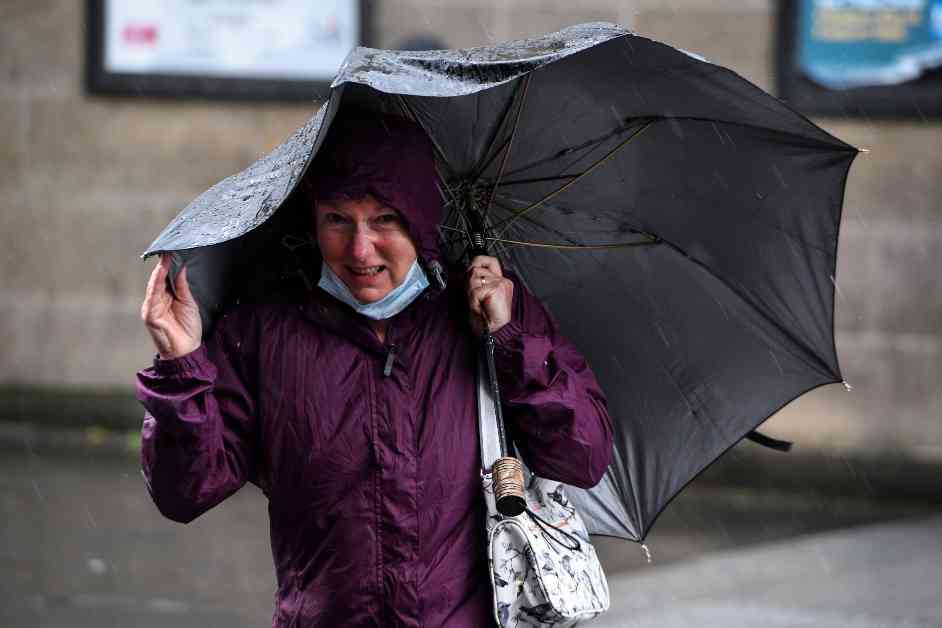The Met Office Unveils Storm Names for the 2024/25 Season
The Met Office has recently unveiled the storm names for the upcoming 2024/25 season, continuing a tradition that was first established in 2015. This list of storm names is crucial for effectively communicating severe weather events and runs from early September to late August the following year, aligning with the onset of autumn.
Honoring Met Office Figures in the Storm Names List
In a unique twist this year, the storm names list includes names that pay tribute to key figures from the Met Office’s rich 170-year history. Among the notable names on the list are James, Lewis, and Mavis, chosen to honor individuals who have made significant contributions to meteorology and weather forecasting.
James, named after Group Captain James Stagg, holds a special significance as he was the chief meteorologist responsible for advising General Dwight Eisenhower on the weather forecast leading up to the historic D-Day landings. His expertise and dedication played a crucial role in the success of this pivotal military operation.
Lewis, another name on the list, is a nod to Lewis Fry Richardson, a pioneering figure who developed a groundbreaking theory that utilized mathematics and physics to enhance weather forecasting through the use of computers. His innovative approach revolutionized the field of meteorology and laid the foundation for modern weather prediction methods.
Mavis, the third name in the list, honors Mavis Hinds, who played a vital role in the early development of Met Office computers. Her contributions helped advance the capabilities of weather forecasting technology, enabling more accurate and timely predictions of severe weather events.
Collaborative Efforts in Naming Storms
The practice of naming storms is not unique to the Met Office, as meteorological agencies worldwide, including Met Eireann in Ireland and KNMI in the Netherlands, also adopt this approach to facilitate the communication of severe weather alerts. By assigning names to storms, meteorologists aim to improve public awareness and preparedness for potential hazards associated with extreme weather conditions.
Reflecting on the Impact of Storm Names
Last season, Storm Lilian made headlines as the 12th named storm of the 2023/24 season, bringing strong winds exceeding 70mph to northern regions of England and Wales. It marked the first time the letter “L” was used for a storm name, adding a unique twist to the ongoing naming convention.
Will Lang, who oversees responses to severe weather events at the Met Office, emphasized the significance of honoring historical figures through storm names, especially as the organization celebrates its 170th anniversary. Recognizing the contributions of individuals who have shaped the field of weather and climate science underscores the Met Office’s commitment to excellence and innovation in meteorological services.
The Full Storm Names List for 2024/25
The complete list of storm names for the 2024/25 season includes a diverse range of names, each with its unique significance and history. From Ashley to Wren, the list features names like Bert, Eowyn, Tilly, and more, representing a blend of traditional and contemporary choices that reflect the evolving landscape of meteorology and weather forecasting.
Looking Ahead to the 2024/25 Storm Season
As the Met Office prepares for the upcoming storm season, meteorologists and weather experts are gearing up to monitor and respond to potential severe weather events that may impact the UK and surrounding regions. With a diverse range of storm names at their disposal, they are well-equipped to track and communicate the trajectory of storms, ensuring that communities are informed and prepared for any weather-related challenges that may arise.
In conclusion, the unveiling of the storm names for the 2024/25 season marks a significant milestone for the Met Office and the field of meteorology as a whole. By honoring historical figures and adopting a collaborative approach to naming storms, meteorologists are not only enhancing the communication of severe weather alerts but also paying tribute to the pioneers who have shaped the world of weather forecasting. As the new storm season approaches, the Met Office remains committed to its mission of providing accurate and timely weather information to safeguard lives and protect communities from the impact of extreme weather events.
































